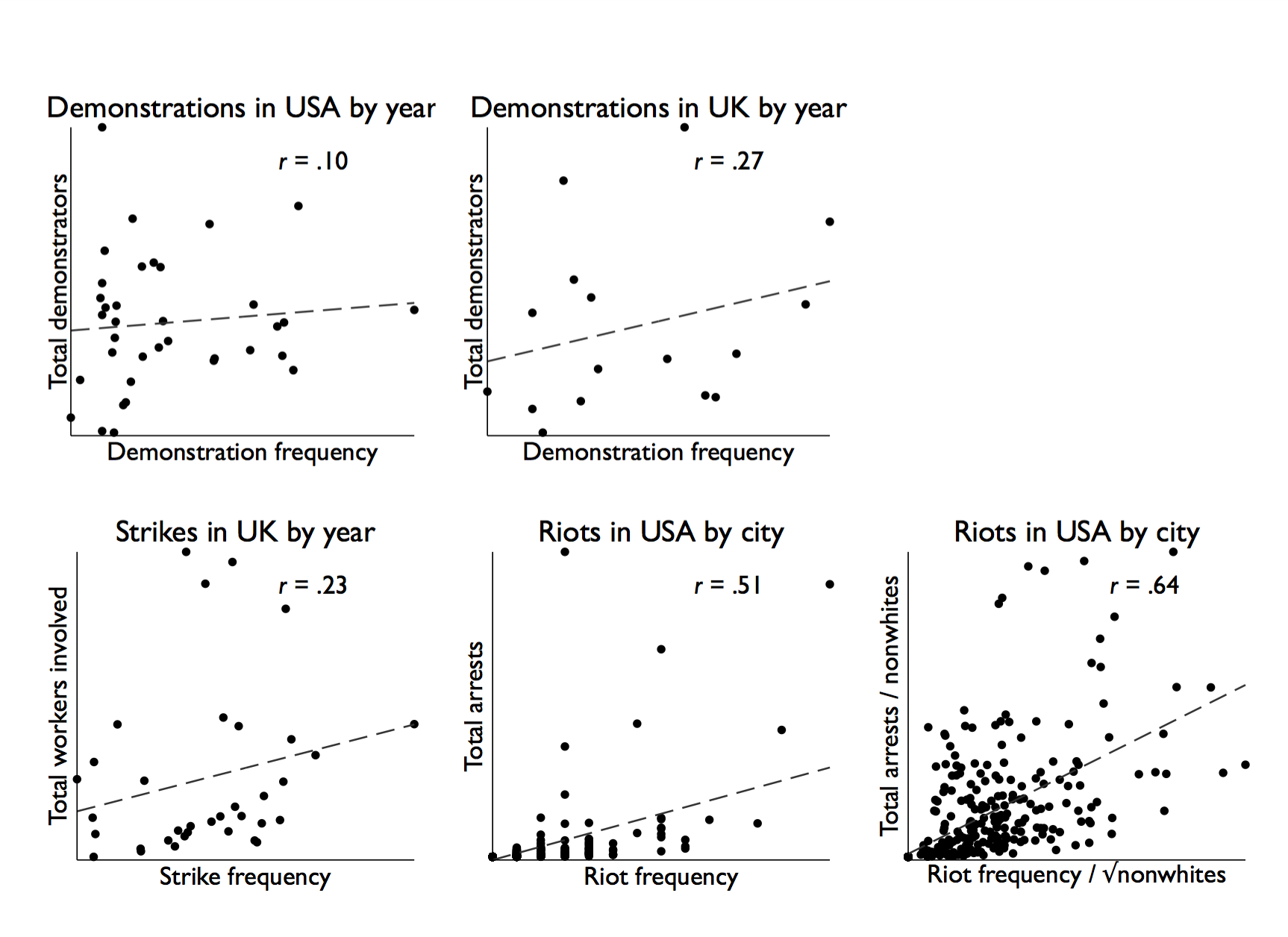 Since the 1970s, catalogs of protest events have been at the heart of research on social movements. Sociologists count the frequency of events to measure how protest changes over time or varies across space, either as the dependent variable or as a key independent variable. This measure is disconnected from theory, which conceptualizes protest as collective action—by implication, actions should be quantified. Most fundamentally, counting events is inappropriate because it treats an event with ten participants as equal to an event with a million. This article investigates three forms of protest: demonstrations, strikes, and riots. Their size distributions manifest enormous variation. Most events are small, but a few large events contribute the majority of protesters. When events are aggregated over years, there is little correlation between event frequency and total participation. Therefore analyses of event frequency are not informative about the causes or consequences of participation in protest. The fact that the bulk of participation comes from large events has positive implications for the compilation of event catalogs. Rather than fretting about the underreporting of small events, concentrate on recording large ones accurately.
Since the 1970s, catalogs of protest events have been at the heart of research on social movements. Sociologists count the frequency of events to measure how protest changes over time or varies across space, either as the dependent variable or as a key independent variable. This measure is disconnected from theory, which conceptualizes protest as collective action—by implication, actions should be quantified. Most fundamentally, counting events is inappropriate because it treats an event with ten participants as equal to an event with a million. This article investigates three forms of protest: demonstrations, strikes, and riots. Their size distributions manifest enormous variation. Most events are small, but a few large events contribute the majority of protesters. When events are aggregated over years, there is little correlation between event frequency and total participation. Therefore analyses of event frequency are not informative about the causes or consequences of participation in protest. The fact that the bulk of participation comes from large events has positive implications for the compilation of event catalogs. Rather than fretting about the underreporting of small events, concentrate on recording large ones accurately.
Unexpurgated version: Oxford Sociology Working Paper, no. 2015-05
Michael Biggs, Department of Sociology, University of Oxford
